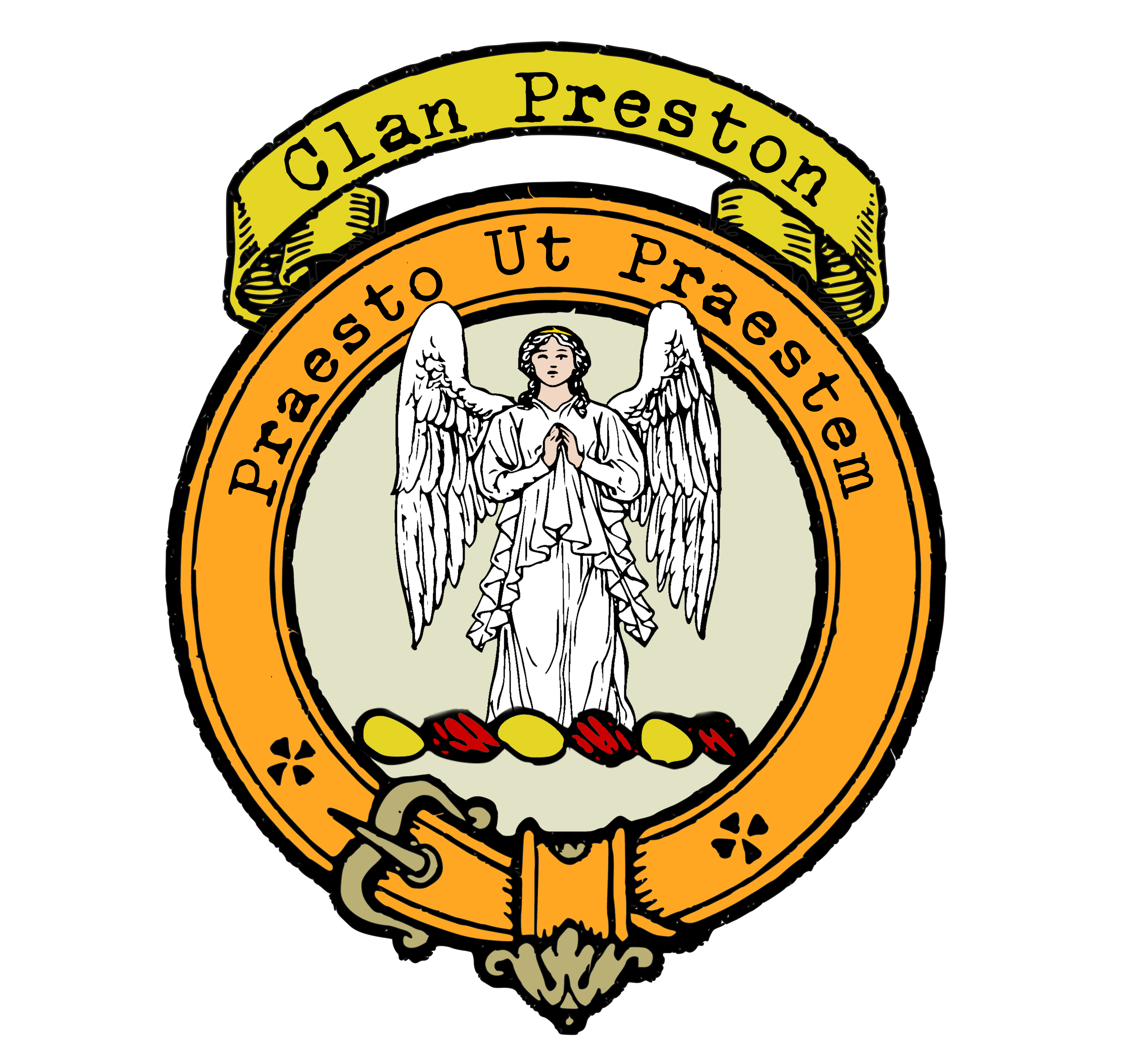Clan Preston
|
|
CREST: An angel Proper MOTTO: Praesto ut praestem TRANSLATION: I undertake what I may perform VARIATIONS: N/A |
| The origins of Clan Preston can be traced back to lands that were likely associated with a church or monastery, often referred to as the “priests’ town.” The name “Preston” itself signifies this connection, as it essentially means “the priests’ town.” This suggests that the clan may have been connected to religious establishments or ecclesiastical lands in its early history.
One of the earliest records of the Preston name dates back to 1222 when a man named Lyulph held land in Linlithgow, which he generously donated to the Abbey of Newbattle. This act of philanthropy highlights the clan’s early involvement with religious institutions and the broader community. Clan Preston also produced several notable figures throughout history:
Craigmillar Castle, which the Prestons owned for centuries, still stands today, although in ruins. This impressive structure dominates the surrounding countryside and serves as a reminder of the clan’s historical significance. Additionally, the Preston family’s restoration efforts at Culross Abbey near Dunfermline have preserved a magnificent piece of Scottish vernacular architecture. Culross Abbey is now under the care of the National Trust for Scotland. Beyond their involvement in political and military affairs, the Prestons also made significant contributions to their communities. Sir Simon Preston’s efforts to secure a charter for the Trinity Church and Hospital in Edinburgh, aimed at assisting the poor, exemplify their commitment to social welfare. |
|
Citations:
|
|

Purchase @ Redbubble
Purchase @ Amazon.com
Purchase @ Amazon.co.uk

